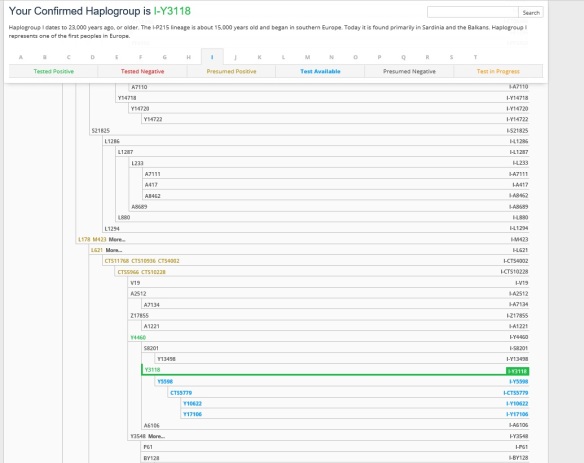At a dead end for my direct ancestors on most of my ancestral lines for quite some time now, I decided to go to work “filling in” siblings and cousins and extended family members in an attempt to uncover more clues about how to advance my research. I revisited my Ziverts family – one that I have a lot of good documents about, but still manages to remain full of unknowns and mysteries.
The mystery: My great great grandfather Indrikis Ziverts. From my point of view, he shows up out of nowhere in Embute draudze, at Brinkenhof estate, purchasing Skrundenieki farm in 1895 and baptizing a child with a young wife he married in an unknown place in 1896. From Skrundenieki’s land file and the godparents listed on Indrikis’ first sons baptism record, I know that Indrikis’ father was named Klavs Jeannot. His mother is still MIA for me.
Anyways, hoping to learn more about Klavs Sr. and Indrikis’ possible birth or marriage locations, I began researching the most intriguing extended ancestor I’ve found so far – my 2x great grandfather Indrikis’ uncle and namesake, Indrikis Sr. Indrikis Sr. was the fifth son of Lauris and Margrieta Ziverts, born at Paplaka estate around 1847. And while I have located his eldest brother Adams’ baptism record in 1836 at Virgas draudze, and his youngest sister Bille’s in 1850, I haven’t uncovered his actual baptismal record yet, frustratingly.
At age 10, Indrikis moved from Paplaka estate, near the large port city of Liepaja, east to rural Brinkenhof estate in Aizpute aprinki with his parents and five siblings, including Klavs Sr., in 1857. They are recorded on the Revision List for Brinkenhof, first living at Mucenieki farm. Klavs Sr, aged 17, went off on his own, north and west to Dizdroga estate this same year. Evidently, Indrikis Sr. followed soon after, to Klein Ilmajen estate, right next door to Dizdroga. Both then “disappear” from records for an extended period.
Indrikis Sr. pops back up in late 1872 at North Durbe draudze, where he marries his wife, Betty Ozolins. Interestingly, he chose to use the German version of his name – Heinrich – and his wife Betty must have as well, since she was born with the more traditionally Latvian sounding first name of Bille. Indrikis Sr. had also picked up a career by the time of his marriage – he is listed as the Bierbrauer of Klein Ilmajen (Mazilmaja) estate – Beer brewer! Their marriage is actually interestingly recorded in 4 different places across 2 different churches – twice at North Durbe, the first record is crossed out. Once in a marriage index for Aizpute, and one nice long form, German congregation marriage record from Aizpute. They left me a hint here – Heinrich is listed as “Ziverts alias Wahrne” – news to me!
in 1872, though serfdom had been abolished in Latvia, still most ethnic Latvians were tenant farmers and generally agricultural workers – land ownership, skilled trades and artisan work was mostly (obviously not exclusively) still for the more upper class, typically Baltic Germans. Latvian was the language of the common people, while German was used in most written documents and official matters. If a Latvian happened to elevate their social status somehow, they might find themselves “Germanizing” their name and attending church with the German congregation – most Lutheran churches gave services in both Latvian and German. This appears to be the case with Indrikis Sr/Heinrich. My direct ancestor Klavs also tried his hand at this – his last 3 children and the only ones I have any baptismal records for were given very German names and baptized at Embutes’ German draudze.
Heinrich and Betty had one daughter at Klein Ilmajen in 1874. They “disappear” again until 1880 when they show up at Embute draudze, where my direct Ziverts ancestors were living. They had another 3 children at Embute, baptized with very German names and baptized in German. They also had very lofty sounding godparents – land owners and German millers, etc. They moved again to Pauri near Saldus, baptized another 2 sons at Saldus draudze, and evidently purchased some land, as Heinrich is listed as a ‘grundbesitzer” – land owner – in those 2 baptism records.
Later on, into the 1920’s and 1930’s, some of Heinrich and Betty’s children can be found in confirmation records from Aizpute church – perhaps they eventually moved to Aizpute, as the trend into the 1900’s was more people moving to cities from rural areas.
So some hints: the family was able to enjoy some benefits of an elevated social status – owning land, attending German congregations, learning tradeswork. Was it Heinrich who was the first to achieve this? The rest of the family seems to be your standard peasant farmers up until Heinrich’s marriage in 1872. Was it something Heinrich did? Or maybe his father Lauris? Was Heinrich in some sort of apprenticeship at Klein Ilmajen learning to be a brewer prior to his marriage? Is that what Klavs left his family for Dizdroga estate at age 17 to do, an apprenticeship?
The family sure was mobile though. Paplaka to Nikrace to Durbe to Saldus and Aizpute, Liepaja.. they definitely got around, making them harder to trace!!








